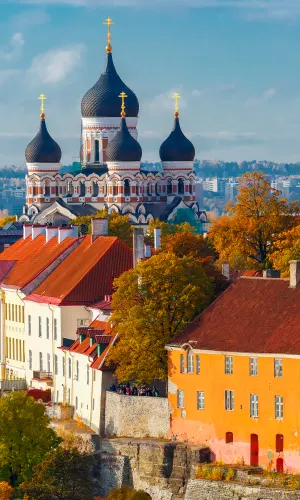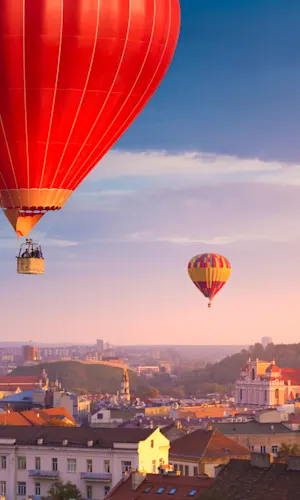Vilnius
Narrow medieval cobble stoned streets, secluded courtyards & town castles.
Narrow medieval cobble stoned streets, secluded courtyards, town castles and a number of churches of the old town all combine to charm the traveller visiting Vilnius. The city’s Old Town, Unesco-protected, of course, is a cobbled labyrinth of parks, squares, bars, cafes and restaurants. There is also an array of charming neoclassical and baroque churches, such as the Church of the Ascension.
Rebellious, quirky and vibrant, Lithuania (Lietuva) is Europe's best-kept secret. Shoved successively between Russian pillar and Nazi post, tenacious little Lithuania stunned the world when it played David and Goliath with the might of the Soviet Union - and won its independence just over a decade ago. Today the nation that vanished from the maps of Europe is back with a vengeance: it's part of the EU, was the first of the 25 EU players to give the European Constitution a stamp of approval and is a fully fledged 'n' fighting partner of NATO - home no less to four F-16 military alliance jet fighters used to police Baltic skies.
As you walk around town, be sure to check out the declared republic, Užupis, a cool and edgy neighbourhood on the wrong side of the Vilnia River. Say what you will about autonomous hipsters, but the postcode is awash with trendy bars, shops (conceptual shoe shop, anyone?) and restaurants. Make sure you have a pint in the country’s “parliament” by the river, where the state’s constitution is on display.
One museum not to miss is the The Museum of Genocide Victims, which is a grim but important visit. As well as dealing with the systematic murder of Jews by the Nazis, it studies the brutal treatment of the nation by the Soviets during both the war and subsequent occupation. Housed in the former KGB building across from Lukiškės Square, the museum retains in its basement the prison used by the Russian secret service, as well as the original execution chamber, where bullet holes still scar the walls.




